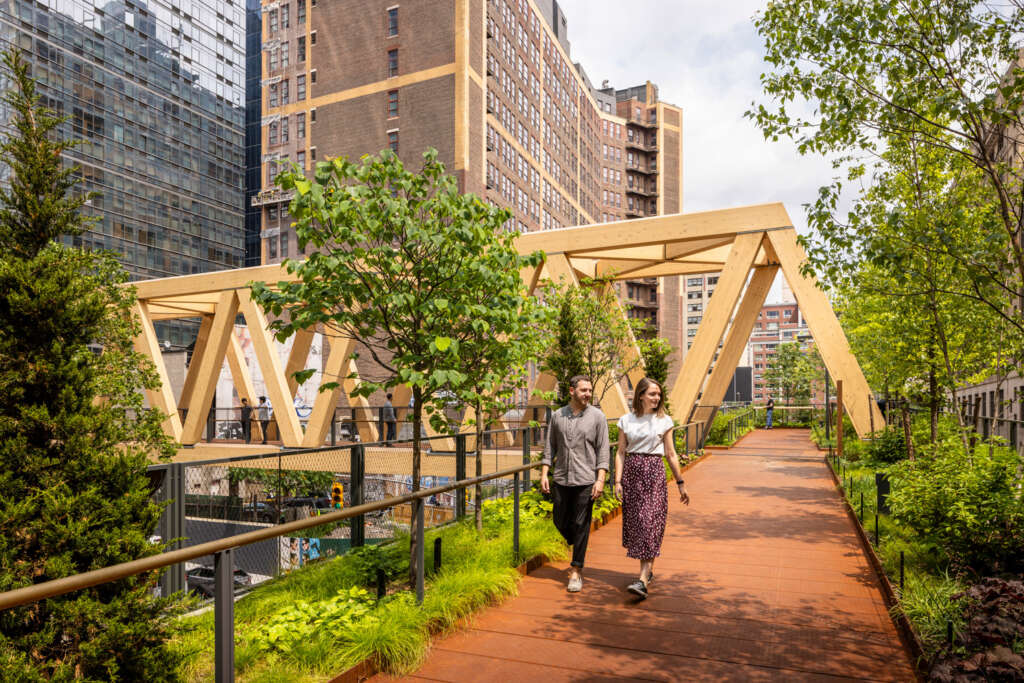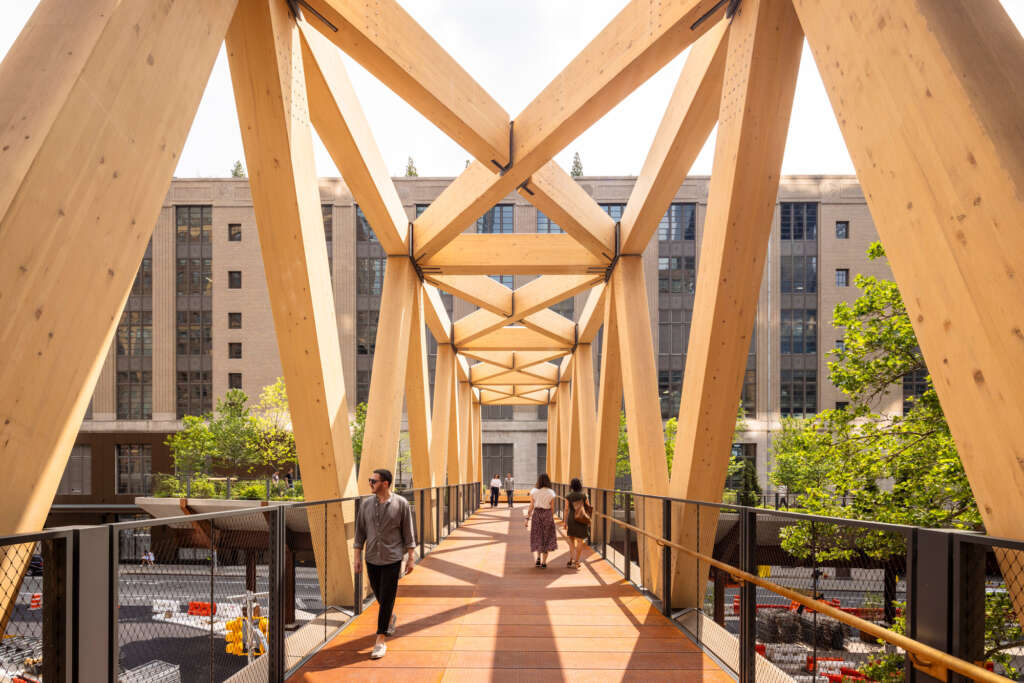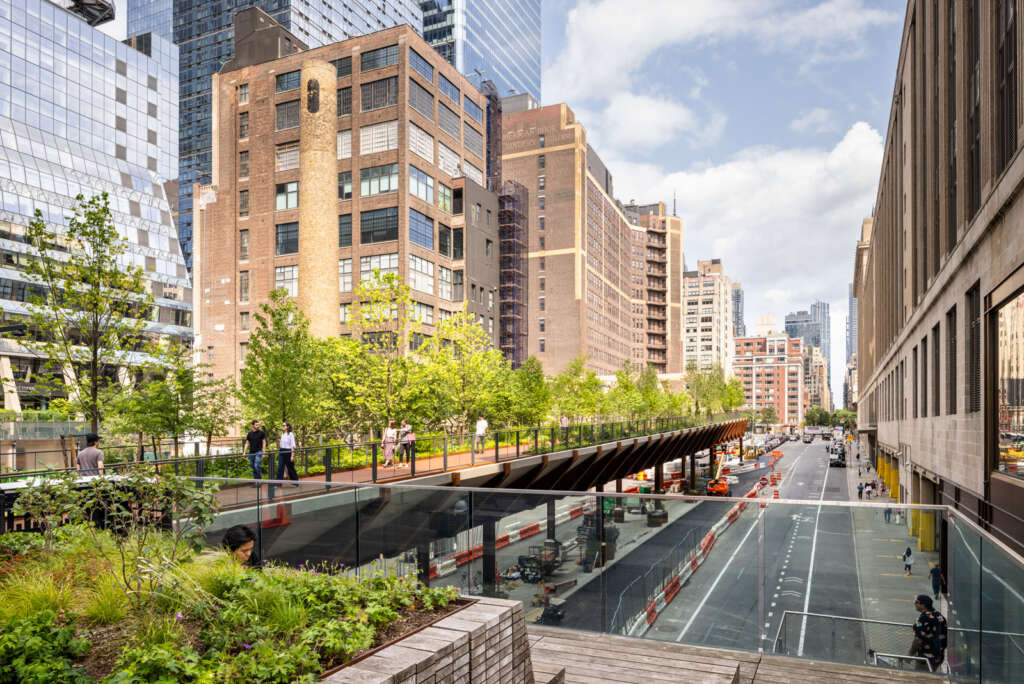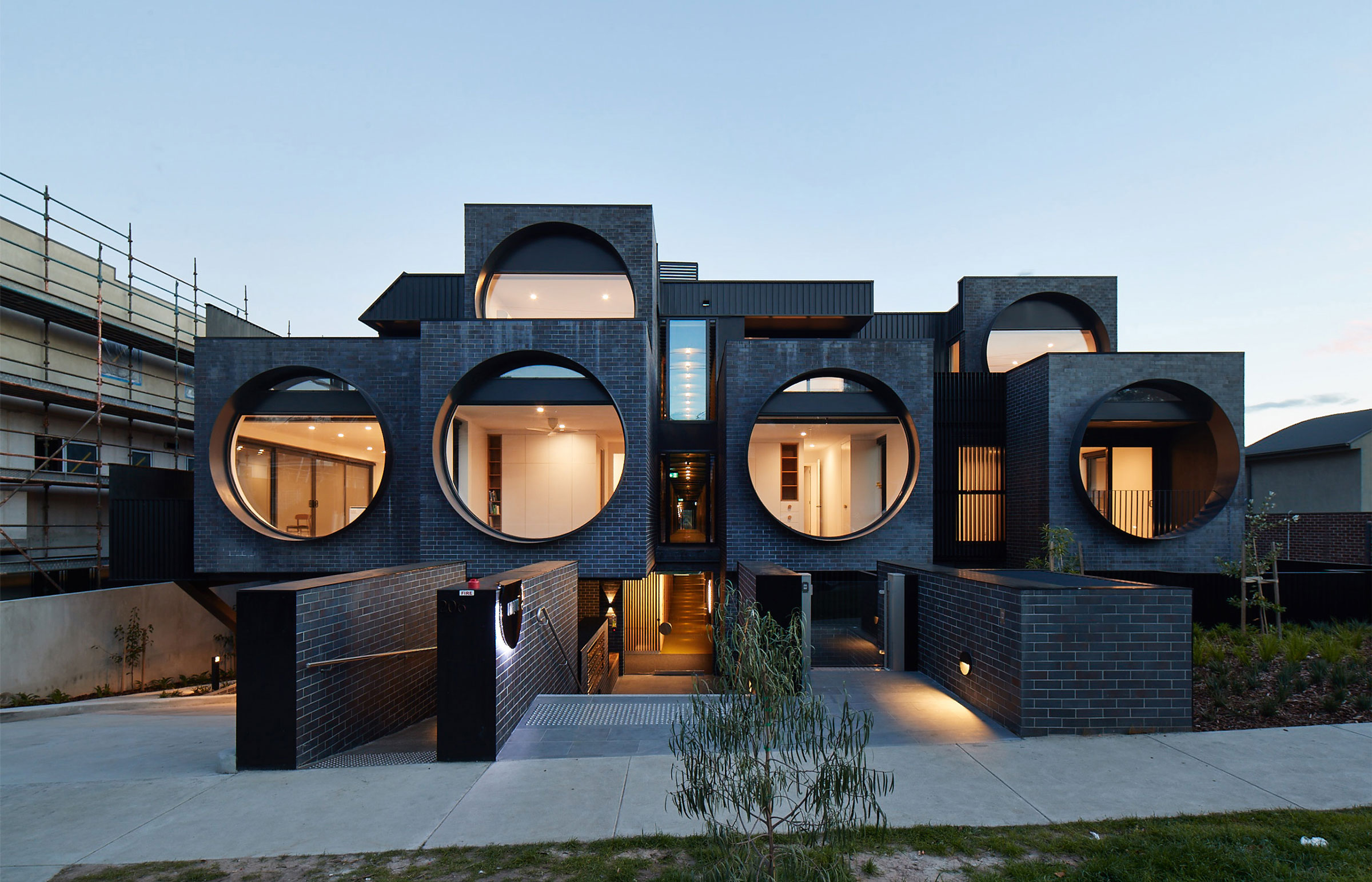
The High Line – Moynihan Connector
Architect: SOM, Field Operations
Location: New York City, USA
Type: Bridge
Year: 2023
Photographs: Andrew Frasz
Linking Moynihan Train Hall and the High Line, the Connector Brings a Safe, Green, and Extraordinary Pedestrian Experience to Midtown West
The following description is courtesy of the architects. The High Line – Moynihan Connector—designed by Skidmore, Owings & Merrill and James Corner Field Operations and led by Empire State Development, the Port Authority of New York and New Jersey, Brookfield Properties, and Friends of the High Line—is part of a long-standing vision to create safer, more enjoyable pedestrian access, connect people to transit, and seamlessly link public open spaces and other community assets in the neighborhood. As the latest chapter in the evolution of Midtown West, the Connector forms a link between a series of civic spaces all the way from Midtown West to the West Village.
The Connector creates an extraordinary pedestrian experience, composed of two bridges
running above Dyer Avenue and West 30th Street. The new bridges create an elevated, accessible, and episodic urban journey from the doorstep of Moynihan Train Hall to the contemporary public spaces of Brookfield’s Manhattan West and the verdant gardens and historic structure of the High Line.

The 260-foot-long Timber Bridge, a glulam Warren truss made from sustainably sourced wood, offers an inviting space protected from the traffic emerging from the Lincoln Tunnel. This structural solution requires minimal connections to the ground, allowing the existing roads to remain undisturbed, and maximizes the use of renewable materials. The 340-foot-long Woodland Bridge introduces the immersive landscape of the High Line with deep and continuous soil beds built into the structure, supported by architecturally exposed weathered columns and angled bracket arms that vary dynamically with soil depths. These support large trees characteristic of an Eastern Deciduous Forest that will grow into a lush landscape for birds and native pollinators, provide shade, and shield pedestrians from traffic below.
Responding to the site and context, the two bridges have their own architectural and structural expression and experience, and they are aesthetically united by a warm material palette of weathered steel decking and bronze handrails. The intersection of the two bridges creates a special moment of pause, allowing the visitor’s orientation to shift from east-west to north-south while moving from an immersive woodland experience to an immersive timber experience. The planting on the Woodland Bridge shifts from high to low to create a varied expression as visitors move in each direction. The dynamic landscape allows pedestrians to see the timber structure rise over the diagonal pathway, creating a visual link to the trees in Manhattan West’s public spaces for a distinct sense of place while guiding pedestrians to their destinations on both sides.

Quotes
“This is a project that ties neighborhoods and public spaces together. We’ve heard for years about how inhospitable these streets around the entrance to the Lincoln Tunnel felt for people in the community. Now, the Connector will give our neighbors a safe, green, and inspiring pathway between the High Line and Midtown,” said Alan van Capelle, Executive Director of Friends of the High Line. “We are so grateful to our partners at the State, Brookfield Properties and the NYC Department of Parks and Recreation for helping us realize this vision.”
“The High Line – Moynihan Connector knits the city’s open spaces together—bringing greater accessibility to pedestrians across Midtown West’s major public amenities,” said SOM Design Principal Kim Van Holsbeke, AIA, LEED AP. “Both the Timber Bridge and the Woodland Bridge have distinct identities and expand the High Line’s rich tapestry of experiences. When walking from Moynihan Train Hall, through Manhattan West, across the two bridges, and to the historic High Line, travelers, residents, and commuters experience an episodic journey through some of the best civic spaces that New York has to offer.”
“Inspired by the eclectic character of the West Side and the High Line, the new Connector offers yet another kind of urban experience and promenade for the area,” said James Corner, RLA, FASLA, Founder & CEO of Field Operations. “The design creates a sequential journey from one context to another, combining surprising industrial features and materials with lush woodland vegetation and directed vistas across the city. This new and vital pedestrian walk connects Midtown to the High Line and the West Side with a heightened sense of drama, spectacle, and delight.”




